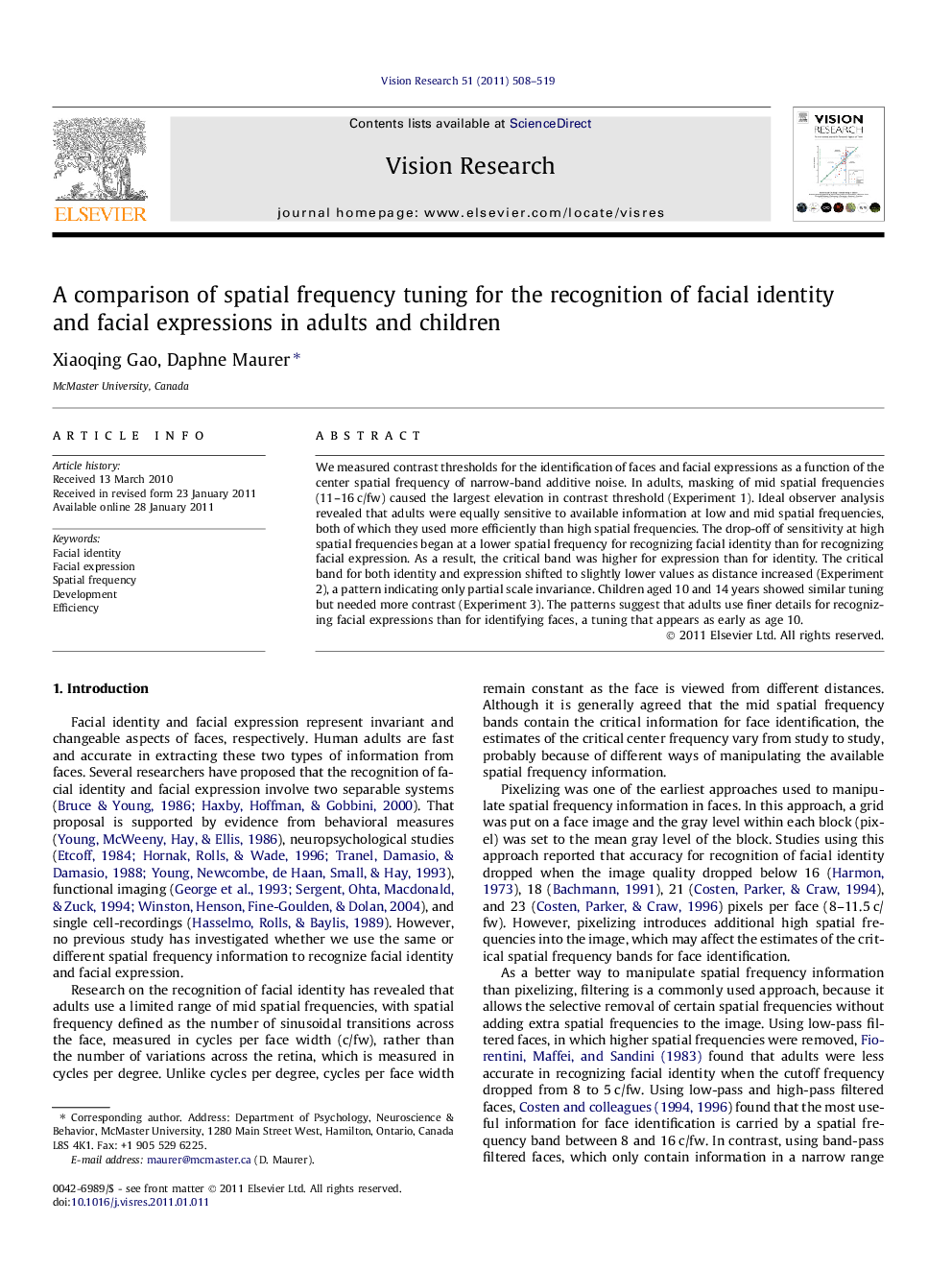| کد مقاله | کد نشریه | سال انتشار | مقاله انگلیسی | نسخه تمام متن |
|---|---|---|---|---|
| 4034251 | 1263440 | 2011 | 12 صفحه PDF | دانلود رایگان |

We measured contrast thresholds for the identification of faces and facial expressions as a function of the center spatial frequency of narrow-band additive noise. In adults, masking of mid spatial frequencies (11–16 c/fw) caused the largest elevation in contrast threshold (Experiment 1). Ideal observer analysis revealed that adults were equally sensitive to available information at low and mid spatial frequencies, both of which they used more efficiently than high spatial frequencies. The drop-off of sensitivity at high spatial frequencies began at a lower spatial frequency for recognizing facial identity than for recognizing facial expression. As a result, the critical band was higher for expression than for identity. The critical band for both identity and expression shifted to slightly lower values as distance increased (Experiment 2), a pattern indicating only partial scale invariance. Children aged 10 and 14 years showed similar tuning but needed more contrast (Experiment 3). The patterns suggest that adults use finer details for recognizing facial expressions than for identifying faces, a tuning that appears as early as age 10.
Research highlights
► Spatial frequency tuning is slightly higher for expression than for identity.
► For identity and expression, efficiency is comparable for low and mid frequencies.
► Tuning for both identity and expression is only partially scale invariant.
► Children aged 10 and 14 years show adult-like tuning but need more contrast.
Journal: Vision Research - Volume 51, Issue 5, 2 March 2011, Pages 508–519